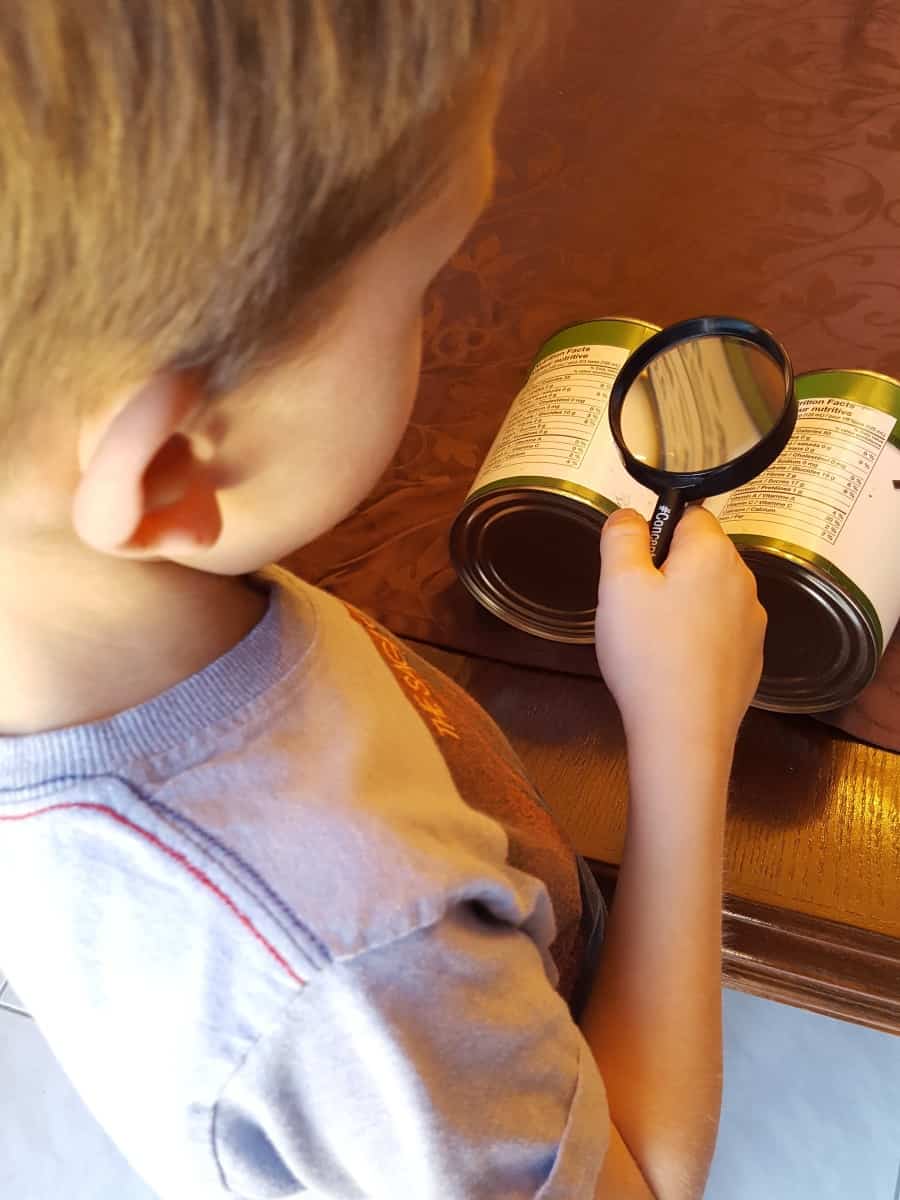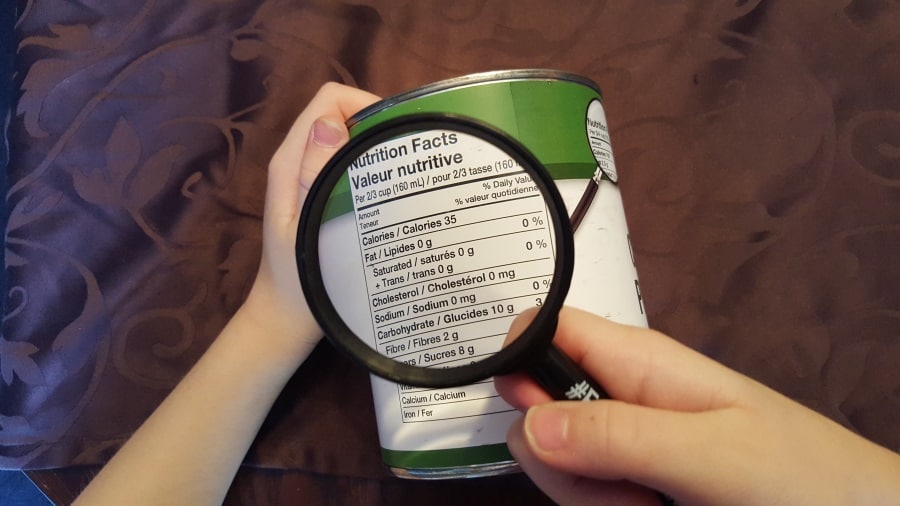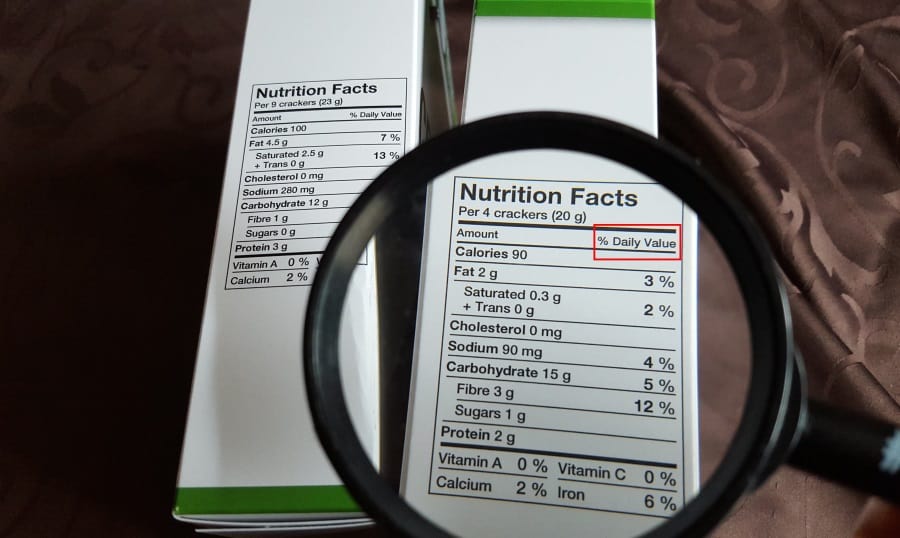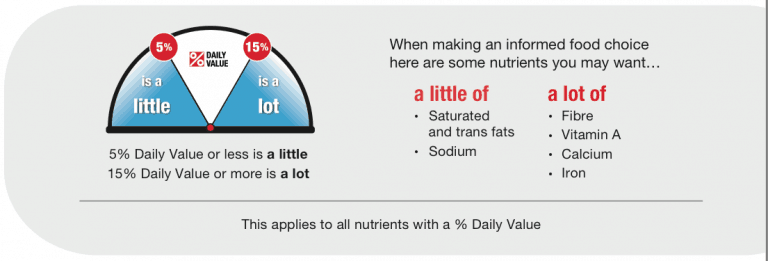Good nutrition is important for everyone, but especially our little ones’ growing bodies (even though we secretly wish they’d stay little forever). There is so much to think about, and so little time to avoid tantrums at the supermarket. Are you trying to avoid certain things, like saturated fats and too much salt or sugar? Are you trying to choose foods that are high in vitamins and minerals? It’s hard to find time in our busy lives to make every meal straight from scratch, so sometimes we must reach for packaged foods instead of making homemade pasta and canning our own tomatoes (sometimes…).
When you’re trying to make the best and healthiest choices for your family, the first place you should check is the packaging. Fortunately, in Canada, ingredients and the Nutrition Facts label, are found on almost every packaged food product you can find at the store.

If you’re looking at the labels for the very first time, it can be confusing to know where to begin in understanding what the values mean and what’s most important to look at, especially when you’re comparing two products! Canada Nutrition wants you to be comfortable – not only figuring out Nutrition Facts for yourself, but so that you can teach good nutrition education to your children as well!
Have no fear – with these few pointers, you’ll become a Nutrition Facts reading NINJA in no time.
#1 – Start with the serving size.
If you want to compare two products ‘apples to apples’ (figuratively speaking!), or decide how healthy (or not) a product is, you’ll first need to see what serving size is. This is the quantity of food that was used to produce the Nutrition Facts information.
Sometimes the serving size is very straightforward (e.g. 1 bottle, or 4 crackers). Sometimes the serving size is only a portion of the whole (e.g. 240 mL of a 600 mL bottle). It’s important to note the serving size because you may either have to calculate the values for your own serving size or change your portion sizes accordingly! And when you’re comparing two products, you’ll either want to make sure that the serving size is similar, or you’ll have to do some math while you’re standing in the grocery aisle (ps – every mobile phone is now equipped with a handy calculator and you can look like you’re simply texting instead of having trouble with the math).

#2 – Look at the percent of Daily Value.
The percent of Daily Value gives you a good estimate of how much or how little of a nutrient is contained in the serving size. This can help you a lot in making choices between products, especially when you’re trying to decide what sorts of things you may want to limit your daily intake on.

#3 – Focus on the Nutrient Percentage
Percentages of over 15% mean that the product is very high in a nutrient per serving, and percentages under 5% mean the product is very low in a nutrient per serving. Remember, some things are better for you when they’re low… like sodium, added sugars, and saturated and trans fats!
You should use the percentage of daily value to help you in finding foods for your family that are higher in healthy things like fiber, vitamins, and minerals important for growing bodies like calcium and iron! If the percentage of these good things is 5% or under, the food is not a good source of these nutrients. When they’re above 15%, they’re excellent sources of these nutrients.

Want to learn more about how to measure the value of nutrition and about the resources for Canadians? Check out the Government of Canada’s page on Nutrition Facts right here and then visit the Focus on the Facts website!
Disclosure: This is a sponsored post. All opinions are our own.


[…] him the red cup, then take it away because it is awful and offensive. I will likely give-in to an extra pack of fruit snacks and let him run wildly through the house without pants. Because…it’s pants. Who really […]
kami dari de nature indonesia menjual berbagai macam obat herbal produk de nature indonesia
jual obat sipilis asli indoneisa